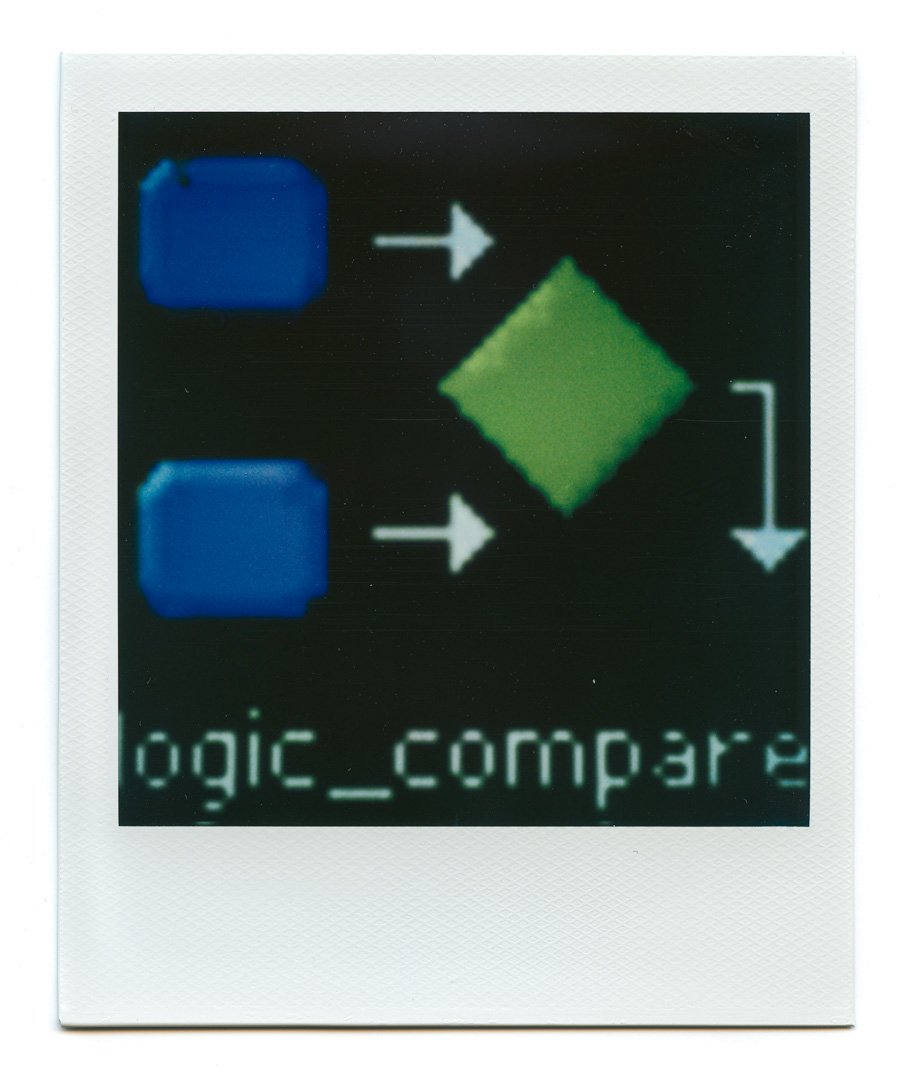Obsolete (Ongoing)
Obsolete (Image Set), 2023
Instant Film
3.4 x 4.2”
As a test a few years ago, I used Polaroids to photograph in-game scenery of videogames. Through the softness and lack of clarity of the medium, I was able to make the images look as though they were taken in real life.
In this series, I capture developer textures and tool icons from an old videogame engine using a Polaroid camera—peering behind the curtain of traditional graphics we are used to being immersed in. These assets are never meant to be seen once the game is compiled and run.
I spent many years of my life in the modding community, creating maps using Valve’s Source engine, released in 2004. The engine is beginning to feel antiquated, much like its predecessor GoldSrc—and even before that, Quake Engine.
In my attempts to learn newer engines, I find myself without the time, as I once did in my teens, to fully grasp the complexities of their toolsets. I think, while modern engines can truly create works which look (and feel) life-like, their barrier-to-entry means those who strive for realistic graphics and simulations have an ever increasing uphill climb to learn and also compete for attention.
I feel the opposite seems true for vintage mediums. People are willing to look past the limitations—the imprecision—of older mediums and even have deep reverence for their flaws and rough edges. People love the Polaroid for its softness, uneven chemical development, the unpredictability of the final output…people love 35mm film for its grain…people love old videogames for their pixelated or low-poly aesthetics… So while new technology for creation is more robust than its predecessors, it often sets the bar high to produce high fidelity visual spectacle.
So currently, I am left with the knowledge of this—almost—20 year old inferior engine and its strange assortment of glyphs—feeling much like a photographer who does not know Photoshop or a cinematographer that can only edit reels by hand.





























